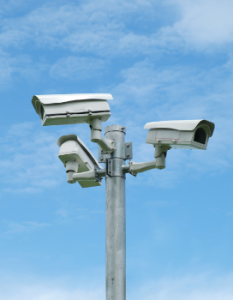Dress code is a subject that can cause much controversy and doubt among both employers and employees. The desire to maintain professionalism and an appropriate corporate image certainly requires an understanding of the legal framework and doctrinally accepted principles regarding dress code in the workplace.
Eligibility to establish a dress code in the workplace
According to Article 22 § 1 of the Act of 26 June 1974 – the Labour Code (i.e. Journal of Laws of 2023, item 1465) (hereinafter: the Labour Code), an employee is obliged, amongst others, to perform a specific type of work for the employer and under his direction. On the other hand, following Article 100 § 1 of the Labour Code, such work should be performed conscientiously and diligently, at the same time obeying the orders of superiors and taking care of the good of the workplace.
Although it should be noted that the Labour Code does not explicitly provide for the possibility of employers to regulate the rules on employees’ dress code, it is accepted in doctrine that it is from the above-mentioned provisions that the possibility of regulating dress code rules in an organisation should be read.
Relevant company documents
Regulations concerning the requirements related to the employee’s attire should be found primarily in the work regulations or collective agreement (Articles 11 and 104 of the Labour Code). If there is no obligation to introduce the above documents in the workplace, in accordance with the position of the Supreme Court (Judgment of the Supreme Court of 7.02.2007, I PK 221/06, OSNP 2008, No. 5-6, item 67.), the establishment of the elements of organisation and order at work may be made by way of an order of the employer.
However, for the sake of procedural safety, we recommend that the above issues be regulated in writing, with a specific specification of the requirements that the employer places on its employees.
Dress code and employee’s personal assets
An employer has the right to set dress expectations for employees, but any appearance requirements for employees must be reasonable and proportionate to the nature of the business and applicable industry standards.
A mandatory dress code must not lead to discrimination against employees on the basis of gender, race, religion or other personal characteristics. Therefore, employees cannot be expected to wear attire that goes beyond generally accepted social norms, in particular if the attire is detrimental to their psycho-physical comfort or infringes on their personal rights.
When determining the dress code in the workplace, the employer should take into account the individual needs of employees, e.g. related to religion or health.
It is worth emphasising that the introduction of dress codes should not only concern a narrow group of employees, but the entire workplace. It is understandable to differentiate the dress code according to the position occupied (e.g. a different dress code for a sales representative than for a technical employee, if only because of the need for comfort of movement when performing physical work), but it should be borne in mind that obliging only some employees (e.g. all women) to dress in a specific way may, in certain situations, lead to accusations of discrimination or mobbing in the workplace.
Let us remember that only dress code rules that are equal for all, non-imposing, in line with current legislation and practice are likely to succeed in an organisation, improving its image and ensuring a good working atmosphere.
Employee responsibility
Proper in-house regulations, in accordance with the law and applicable case law, oblige employees to behave in a certain way, in this case to comply with the dress code. Thus, the violation of these rules may, in certain situations, result in employees’ disciplinary liability.
Summary
The introduction of a dress code into the workplace may be justified to build an appropriate image for the organisation, however, it must comply with the law and respect the rights and dignity of employees. The key is to strike a balance between dress code requirements and respect for employee rights and the diversity of employees in the workplace.
If you are interested in implementing an employee dress code, we welcome you to contact us. Our team will be happy to assist you in the proper alignment of company documents.
Author:
Zofia Kwiatkowska, Legal assistant






